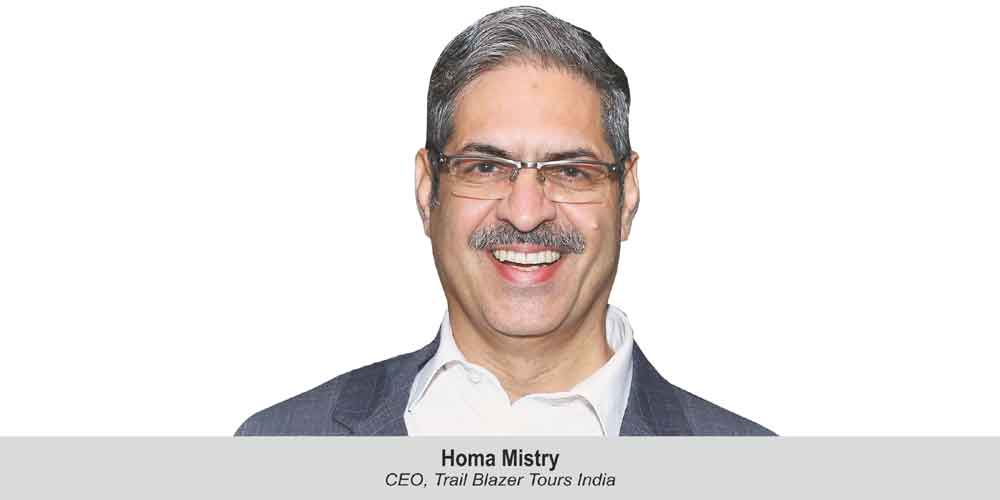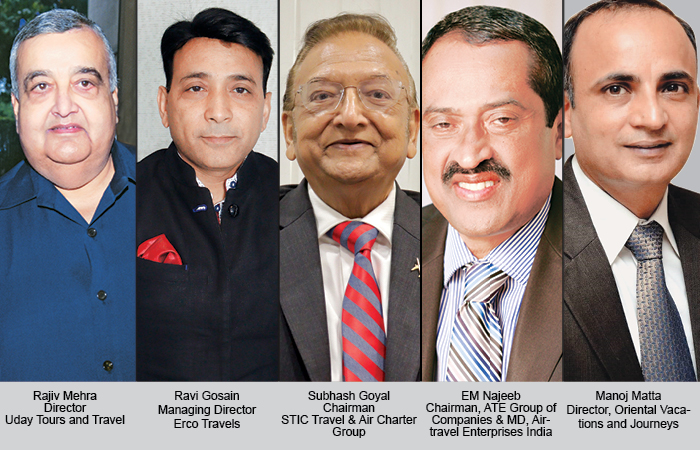Homa Mistry, CEO, Trail Blazer Tours India, discusses the impact of geopolitical changes on tourism, with a focus on India. He also highlights emerging trends and challenges faced by tour operators.
Janice Alyosius
The tourism industry is a dynamic sector that is easily impacted by the geopolitical situations and changing customer preferences. Homa Mistry, CEO, Trail Blazer Tours India, shares the impact of recent geopolitical changes on tourism in specific regions, with focus on India. “India, like many other countries, has experienced the effects of geopolitical situations on its tourism industry. For instance, strained relations between India and Canada have resulted in visa problems, which have hindered the flow of tourists between the two countries. Similarly, ongoing issues have led to a decline in the number of Russian tourists visiting India. While these challenges are real, there are positive signs of recovery in other areas, and it is predicted that India will reach at least 80 per cent of the tourism figures from 2020,” he says. Post-COVID, there has been a noticeable shift in tourist preferences. Mistry highlighted some of the key trends that are emerging in the tourism sector. “While traditional itineraries still hold appeal, there is a growing demand for wellness experiences in India. Tourists are eager to explore the country’s rich offerings in terms of holistic wellness practices, yoga retreats, and Ayurvedic treatments. Additionally, there has been a trend towards smaller group sizes, indicating a preference for more intimate and personalized travel experiences,” he says.
Mistry says that inbound travel trends in India have witnessed a reduction in the size of tourist groups and an increase in demand for FITs. “Experiential travel is gaining popularity, with a particular focus on wellness, agricultural experiences, and pre-wedding photoshoots, especially among tourists from countries like Japan. However, uncertainties surrounding visa issues with Canada remain a challenge, and efforts are being made to restore normalcy in travel between the two countries,” he shares.
Mistry also stressed on one of the major challenges faced by tour operators, which is the lack of global advertising. “This limits their reach and hampers the promotion of tourism offerings. Steps are being taken to address this concern and explore opportunities for global advertising in the future. The tourism industry has evolved significantly since the pre-pandemic era, with specialization becoming more prominent, as tour operators strive to cater to specific niches and meet the diverse preferences of modern travellers,” he says. The other point that Mistry emphasizes on is the synergy between tour operators and hoteliers. “Recognizing the significant role of the hotel industry, constituting about 65-70 per cent of the package cost, efforts have been made to foster a productive partnership between tour operators and hoteliers. This involves understanding the rapidly changing dynamics of the hotel industry, including technological advancements and investments. The goal is to strike a balance that meets the needs of both parties and ensures a mutually beneficial partnership,” he shares.
Speaking of Trailblazers new product offerings, Mistry revealed, “We are focusing on continuously developing new products and itineraries to cater to the evolving demands of tourists . In recent years, unique offerings such as singing tours, Beatles-themed experiences, and wellness packages have been introduced and well-received by clients. Additionally, South America is being aggressively promoted, leading to significant growth in the
Spanish market.”
 TravTalk India Online Magazine
TravTalk India Online Magazine





